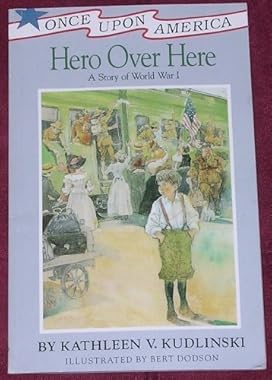World War I, part 3: American Becomes Involved ,1917-1920
 |
| World War I monument, Elkton, Maryland |
 |
| World War I, Hands-On Style |
 |
| Making a submarine model, World War I, Hands-On Style |
Russia Changes Their Government
The Russian army suffered terrible defeats and the war caused shortages of food in Russia. The Russian people began to starve and many blamed it on the tsar. Riots broke out and workers went on strike. Tsar Nicholas gave up his throne. By 1917, the Bolsheviks, now known as the Communists, led by Lenin seized power and made peace with Germany.
U-Boats
We learned a lot about ships and submarines or U-boats this week. First we review the things we had learned four years ago when we had studied this period before and made boats and submarines. Then we learned about it in more detail. Britain had blockaded German ports when it declared war. Britain hoped to lure Germany into a Naval battle since that was Britain's strength. The British naval blockade began to have a serious impact on Germany. By 1917, Germany announced that any ship would be sunk on sight. Germany wanted Britain to withdraw from the war by depriving the island of food and other supplies. The figured that their best chance of winning the war would be if Britain opted out, France alone could be defeated, and that this had to be achieved before the US entered the war.
America Enters the War
Outraged by the sinking of the ships without warning, especially the Lusitania, America considered entering the war. Then a coded message to the German Ambassador in Mexico was intercepted by British Intelligence and decoded. It suggested that if Mexico entered into a war with America, Germany would give Mexico Texas. America enters the war by sending troops to France and eventually engage in 13 campaigns, during the period 1917–1918.
As a writing activity, students can write a series of diary entries from a soldier's point of view. Start with one at enlistment and then others that describe being in the war. A good example of how to do this can be found at ABC'S to ACT's.
As a writing activity, students can write a series of diary entries from a soldier's point of view. Start with one at enlistment and then others that describe being in the war. A good example of how to do this can be found at ABC'S to ACT's.
Woodrow Wilson delivers his 14 points speech.
President Woodrow Wilson
28th President
Served: 1913-1921
Served: 1913-1921
Party: Democrat
Wife died in 1914; he remarried in 1915
Federal Reserve Act passed – one government owned central bank
Struggled to keep America out of World War 1, until his second term in 1917
Oct. 1919, suffered a stroke that left him almost totally incapacitated – This was kept from the public by his wife
Namesakes:
Home in Washington, D.C. now a museum, the Woodrow Wilson House
and the $100,000 bill
Treaties are signed and the League of Nations is formed.
For Our Timeline:
Father Flanagan and Boy's Town, 1917
Influenza Epidemic, 1918-1919
|
maps from Knowledge Quest Comparison of countries in Europe from 1914-1918 and 1919 to 1929 |
| source |
Walt Disney
Walt Disney was a teenager during WWI. He became the cartoonist for his school newspaper, drawing patriotic topics and focusing on World War I. Despite dropping out of high school at the age of sixteen to join the army, Disney was rejected for being underage. After his rejection by the army, Walt and a friend decided to join the Red Cross. Soon after joining he was sent to France for a year, where he drove an ambulance, but only after the armistice was signed on November 11, 1918. Notice his sketch on the ambulance.
- World War I:Hands-On Style
- World War I, 1914: The Beginning
- World War I, 1915-1916: Weapons and Warfare
- Playing War Games...or which is larger...a platoon or a battalion?
- A Learning Twist on an Old Game (could be made with WWI weapons instead)
- How did the United States end up in World War I? at Adventures in Mommydom
- The Peace Treaties of 1919 worksheet and map
- Maps of World War I and Post World War I countries in Europe from Knowledge Quest
- World War I Bi-Planes

- Hero Over Here, A Story of World War I, Kathleen V. Kudlinski (This is actually more about the Flu Epidemic than the war, but it does touch on the flavor of the war, too.)




